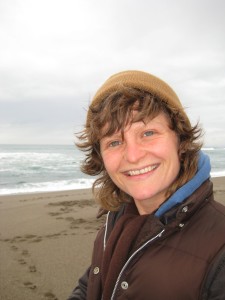This post is the second in a three-part series featuring Char Booth, the Director of Research, Teaching, and Learning Services at the Claremont Colleges Library in Claremont, CA. She works with faculty and students at the seven colleges to integrate information literacy concepts into coursework, often via Wikipedia assignments.

We’ve discussed (see part 1) how Wikipedia assignments contribute to the information ecosystem, expanding access to ideas that would otherwise be beyond the reach of many.
Today we’ll look at how framing assignments as expanding the information ecosystem can spark intrinsic motivators that drive students to learn in the first place. It’s also an excellent way for teaching critical evaluation of the very tool they’re using — and to see, firsthand, how the construction of knowledge works.
“In the simplest terms, we are critical educators when we compel ourselves and others to think about power and privilege, and we are feminist educators when we dig beneath the status quo of our content and identify justice-focused approaches to engaging learners in a process of safe/radical self- and system-examination,” Char Booth writes in her blog post. “These are beautiful ideas, but like any theory they can feel detached from immediate practice.”
Wikipedia assignments, on the other hand, require an engagement with the article topic. Powerful assignments incorporate engagement with a community — contributing information to an active pool of editors who will vet it, and possibly question it.
This kind of knowledge, driven by consensus building, is at its best a reflection of Jurgen Habermas’ model of the discourse of the public sphere. Where there are challenges to student work, Wikipedia becomes an excellent model of Chantal Mouffe’s agonistic pluralism: The idea that friction is inherent to any discourse. Wikipedia, when framed as a chance to engage directly in the public sphere, is a powerful way for students to analyze, critique, and participate in the construction of a meaningful public discourse.
This relies on the assumption of informed civic participation. And that’s where challenging traditional models of information authority can be particularly useful. As a model of the public sphere, an engaged and critical look at Wikipedia’s processes can transform abstract concepts into real experiences.
Booth says Wikipedia assignments can be a great method for applying those ideas.
“When I heard about the Wikipedia Education Program through blogs and social media, I immediately saw its potential as a platform for teaching information literacy skills, promoting community expertise, and challenging traditional ideas of ‘authority’ in academic writing,” Booth explains. “Librarians, faculty, and other educators can engage with Wikipedia not necessarily as editors, but as facilitators of learning through Wikipedia.”
Wikipedia is a space that raises questions: Who writes? Who determines ‘neutrality’? Where does the authority come from? What, and who, are absent? For Booth, these are critiques of the site that make it a place for students to engage with, not withdraw from. By thinking about the thinking behind the encyclopedia, students can be guided to ask these questions during any assignment on any topic. That way, critical thinking becomes embedded into the practical action of building public knowledge.
In part 3, we look at practical methods for building a solid Wikipedia assignment that makes the most of this opportunity.
Char Booth blogs at info-mational and tweets @charbooth.
